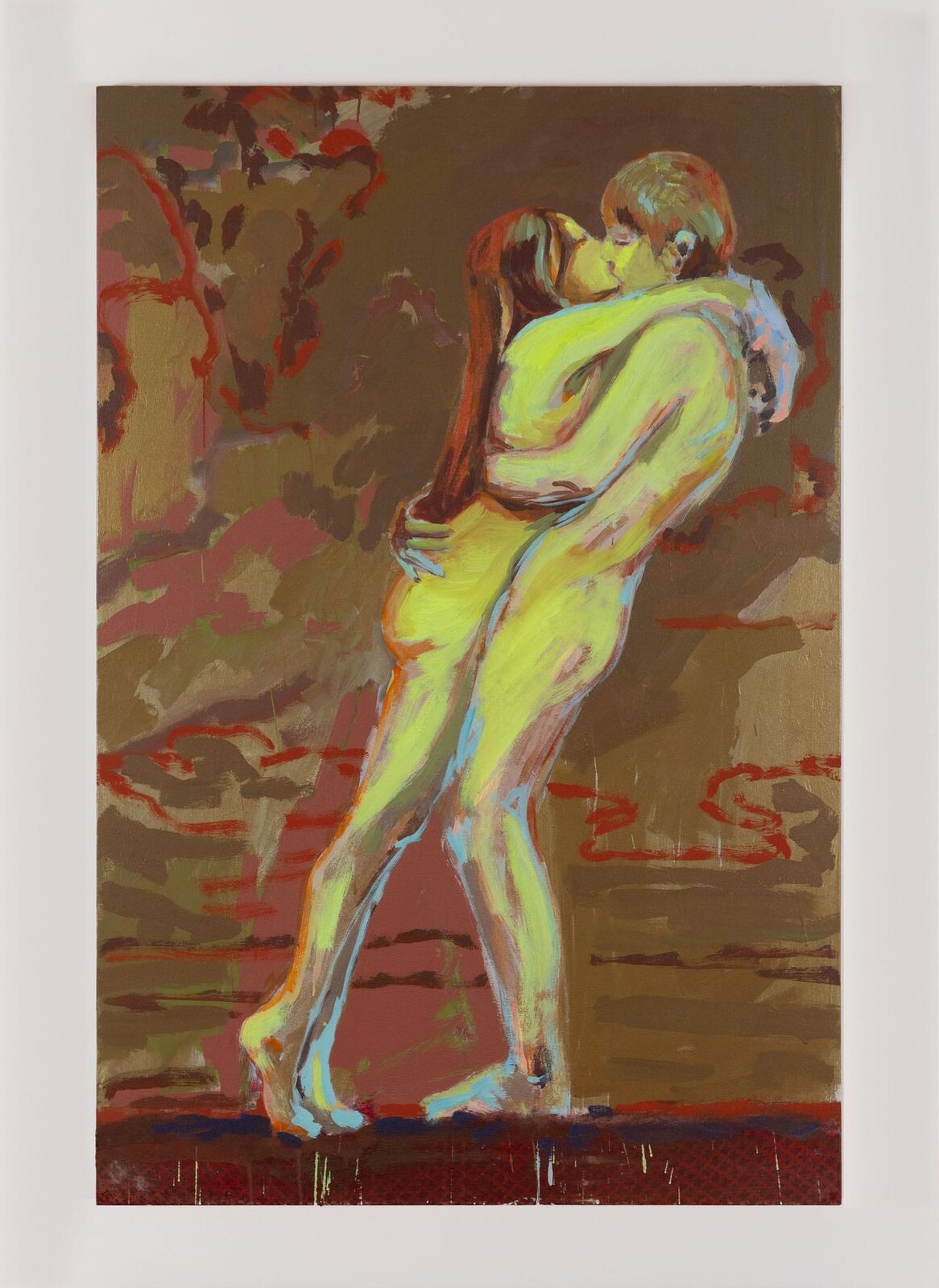Born in Mirrors
January 9–February 23, 2019
17/F, 50 Connaught Road Central
Central
Hong Kong
China
Claire Tabouret sees her successive exhibitions as different acts in one and the same play. From one work to the next, from one exhibition to the next, a thread is being drawn, an underlying narrative is taking shape. In the group portraits that characterized a previous stage of her work, each character, as though frozen in a timeless pose, was the mute protagonist of a buried story. In her recent paintings and works on paper, the artist seems to be launching a new form of narration. A tighter, more concentrated narration, one might even say reduced to its essence: you, me—the couple, whether fighting or embracing.
Getting to the heart of the matter also means—”without beating about the bush, in the artist’s words—tackling a theme that has been overinvested in the iconographic history of the couple and of love affairs. The first act of this story centres on the break. The tense bodies struggling with a ruptured reality, their struggle releasing bursts of incredible energy, as though arrested in their movement by opposing forces, somewhere between struggling and embracing. This new exhibition opens up a second round: tackling the act of love head on, from the close-up of kissing faces in a Hollywood style almost to couples holding one another or pushing each other away.
Opposite the intimacy of desire, the artist sets out the obsessional repetition of motifs, of images: some are collected systematically on the Internet, sufficiently neutral to be reused, while others are convoked by the memory fed by the history of art: Hokusai’s The Dream of the Fisherman’s Wife and Munch’s The Kiss. From these borrowings from art-historical icons to snapshots drawn from a permanently circulating flux, an impression of atemporality emerges. And yet these images particularly difficult to appropriate are appropriated. A profound relation of intimacy takes shape through painting.
Even when it remains latent, Tabouret’s paintings are permeated by a certain violence. It expresses itself in particular in this latest series. The couples, whether wrestlers or lovers, embrace one another and push one another. The tension of these bodies becomes the very subject of the work: bodies in search of a stability that they don’t seem to be able to get hold of unless through domination.
The vehemence of the body language is also that of the painting itself. The drawn silhouettes and their often strident colours contrast with barely painted and sometimes discoloured backgrounds. In some of her latest paintings, the artist’s physical involvement is particularly visible, as she is confronted with the rugged, irregular surfaces of reused fabrics, sometimes printed with decorative motifs that are in part left visible.
Tabouret talks of the state of “intranquility” that guides her. In her group scenes already it was possible to perceive an underlying anxiety, made real by the way in which the characters sometimes found themselves tied up and muddled by their clothes and hair. There was a threat of this dangerous merging with the collective in which individuality risks being buried. Here it is the bodies themselves that come together, even joining in the paint itself at places, where we see the paintbrush move from one to the next. Here too the question of individualization is at stake, but in relation to the couple. The artist likes to recall Oscar Wilde’s question to the effect that when two are one, which one?
It is this mirror-like interplay that the artist stages in her latest works, however, the bodies embrace without ever merging or blending into one another. On the contrary, their tension seems to make use of the dynamic between impulse and repulsion. Facing each other, embracing one another, freeing oneself from the other: this language of bodies is also the language of dance, which Pina Bausch describes as close to the game of love. To the need to be loved, to the desire to be watched.
Claire Bernardi



